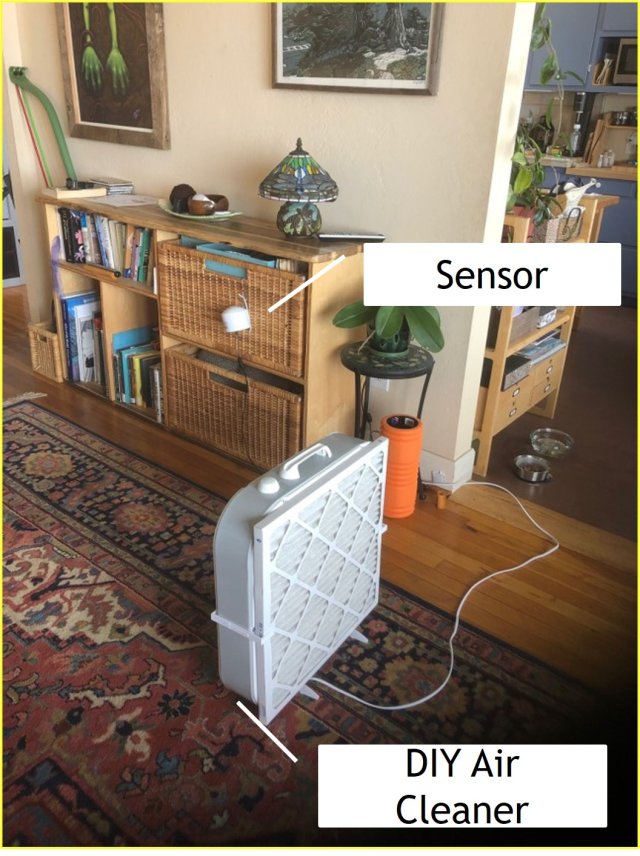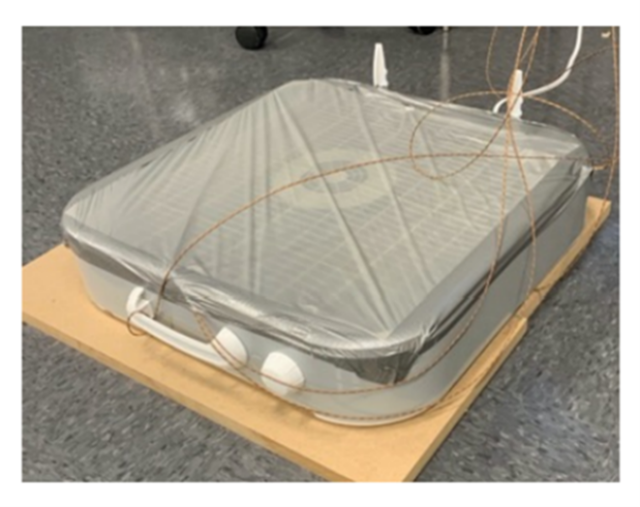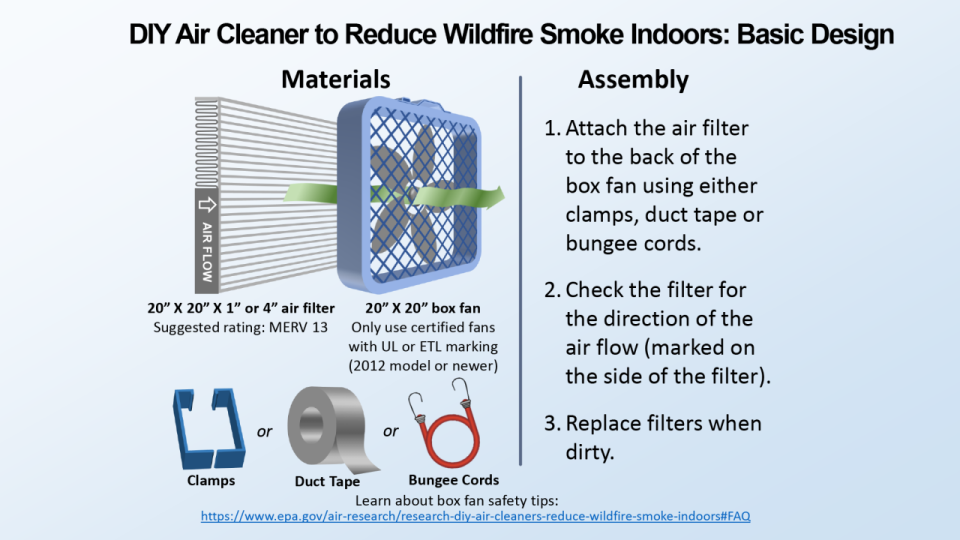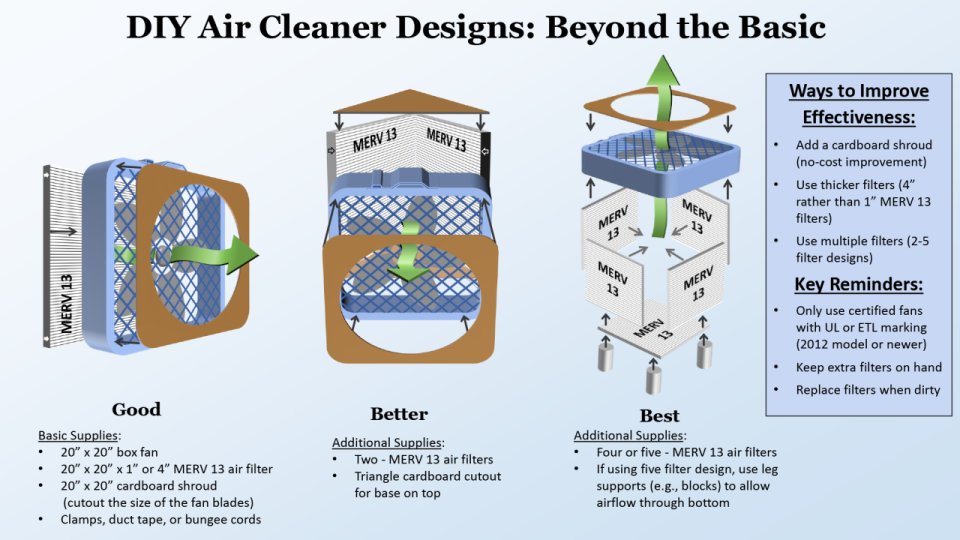Do-It-Yourself Air Cleaners: Making Cleaner Air More Accessible

Published September 6, 2023
Everyone should have the right to breathe clean air. However, during wildfires, the cost and availability of clean air technologies and reliable power sources can create challenges for people trying to protect their health from wildfire smoke. Recognizing these barriers, EPA and other health, environmental, and nonprofit organizations have provided instructions and materials for creating do-it-yourself (DIY) air cleaners. DIY air cleaners are a more affordable and accessible alternative to commercial versions and can be constructed using a box fan and a high-efficiency home air filter (see Figure 1 below). Securing the filter to the fan creates an effective, simple air cleaning system.
This DIY solution filters out smoke particles and improves indoor air quality, but its use has raised key questions about the devices’ safety and effectiveness. EPA scientists and their colleagues are conducting research to answer these questions.
“This research was highly anticipated, particularly by EPA’s western regions, who have suffered from terrible wildfire smoke for years without the ability to recommend more affordable air filtering options to the public,” noted Meredith Bauer, Assistant Director of EPA Region 9’s Air and Radiation Division. “It is important that we develop tools that allow everyone to protect themselves and their families when wildfire smoke is in the air.”

Are DIY Air Cleaners Safe?
In 2021, Chemical Insights Research Institute (CIRI) of Underwriters Laboratories Inc. (UL), in collaboration with EPA, issued a report assessing the fire and burn risks from operating DIY air cleaners. The study tested five different commercial electric box fan models using the basic DIY air cleaner design, which includes one filter. Researchers evaluated these air cleaners with clean filters as well as filters loaded with smoke and dust and simulated extreme scenarios where one or both sides of the fan were obstructed. None of the tested conditions presented a burn or fire risk. The team identified several best practices to safely construct and operate a DIY air cleaner, including using a newer box fan (2012 model or newer) equipped with safety features like fused plugs and thermal cutoffs.
Are DIY Air Cleaners Effective?
EPA researchers evaluated the reduction of simulated wildfire smoke in a number of DIY air cleaner designs in a controlled laboratory chamber to determine if they are as effective as commercial air cleaners. Some key findings from these experiments were:
- DIY air cleaners were as effective as a small commercial air cleaner in reducing fine particle (PM2.5) concentrations.
- DIY air cleaner performance could be improved by the addition of a no-cost cardboard shroud (see Figure 2) to block recirculating air flow past the fan blade tips.
- Designs that incorporated multiple filters showed increased air cleaning capacity and were more cost-effective (see Figure 2).
- DIY air cleaners with dirty filters loaded with smoke or dust were almost completely ineffective, so be sure to replace dirty filters.
Although the DIY air cleaners were just as effective as commercial air cleaners, they were louder and required more power to operate. However, their lower upfront cost and less expensive replacement filters made DIY air cleaners more economical.
EPA also has related ongoing research efforts underway to evaluate the effectiveness of air cleaners to remove smoke volatile organic compounds (VOCs) in laboratory studies and assess the real-world effectiveness of DIY air cleaners.


For more information about this study and to find related resources, visit Research on DIY Air Cleaners to Reduce Wildfire Smoke Indoors.
